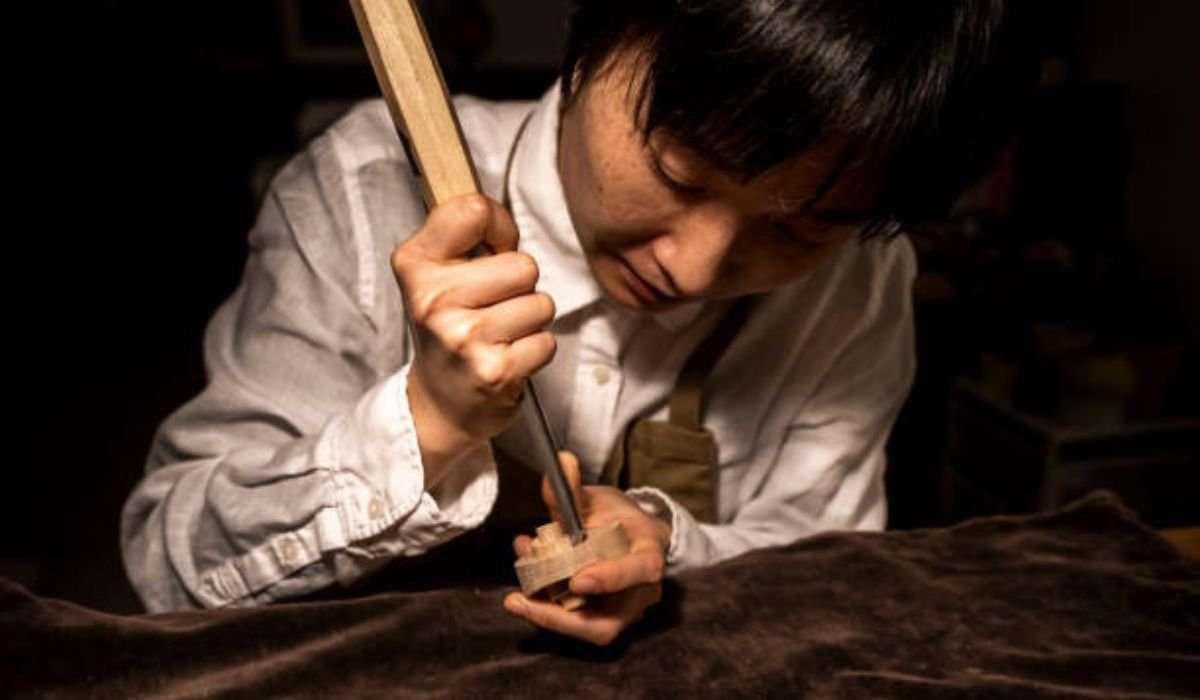Ever run your fingers over a piece of jewelry and feel something more than just metal? A kind of quiet energy, a story whispered from the maker’s hands to your own? In a world saturated with identical, clattering goods spat out by machines, that feeling is becoming rare. Precious, even.
It’s a feeling I chase. And it’s a feeling I found, almost by accident, when I stumbled upon the enigmatic world of Tsunaihaiya.
The name itself is a clue. It’s not a word you’ll find in a standard Japanese dictionary. It’s a katakana-ization, a phonetic rendering of a concept, a brand name built from sounds that evoke its essence. It hints at something crafted, something gathered, something uniquely personal. If you’re tired of the sterile and the mass-produced, you’ve come to the right place. Let’s pull back the curtain on this remarkable brand.
Table of Contents
- The Tsunaihaiya Ethos: More Than Just Accessories
- A Deep Dive into the Tsunaihaiya Aesthetic
- The Silver & Gold Foundation
- The Spirit of the Earth: Turquoise and Natural Stones
- The Lightness of Being: Feather Motifs
- The Tsunaihaiya Collection: Wearing a Piece of the Story
- Rings: Sculptural Statements for Your Fingers
- Bracelets: Wrist Narratives in Beads and Leather
- Necklaces: Centerpieces of Personal Expression
- Keyrings & Leather Goods: Everyday Art
- Handmade vs. Mass-Produced: Why It Actually Matters
- How to Style Your Tsunaihaiya Pieces: The Art of Layering
- The Care and Keeping of Handmade Art
- FAQs
The Tsunaihaiya Ethos: More Than Just Accessories
Let’s be frank. Most of us buy accessories to complete an outfit. A Tsunaihaiya piece, however, often is the outfit. It’s the focal point. This isn’t just a brand that makes things; it’s a philosophy manifested in metal, stone, and leather.
The core of Tsunaihaiya is its unwavering commitment to the handmade process. Every hammer mark, every carefully set stone, every stitch in their leather goods is a testament to the artisan who created it. This results in a beautiful imperfection—a slight asymmetry, a unique texture—that mass production actively eliminates. It’s this very “flaw” that gives each piece its soul. You’re not wearing a product; you’re wearing a artifact of human dedication.
A Deep Dive into the Tsunaihaiya Aesthetic
So, what does this philosophy actually look like? If I had to distill it, I’d call it a “Bohemian Spirit meets Japanese Precision.” It’s wild, but refined. Earthy, but elegant.
The Silver & Gold Foundation
The bedrock of most Tsunaihaiya jewelry is sterling silver, often complemented by rich, gold accents. But this isn’t your high-polish, mirror-finish silver. They often employ techniques like oxidation to darken the crevices, making the designs pop with an almost antique, heirloom quality. It gives the jewelry a sense of history, as if it’s been passed down through generations, even when it’s brand new.
The Spirit of the Earth: Turquoise and Natural Stones
Ah, the turquoise. It’s practically synonymous with the brand. But why? Turquoise is a stone steeped in lore, believed to offer protection and positive energy. Its vibrant, variegated blue-green hues are a perfect counterpoint to the cool, dark silver. It evokes images of vast Southwestern skies and deep, still water. You’ll also find other natural stones like howlite and agate, each chosen for its unique color and texture, ensuring no two pieces are ever truly identical.
The Lightness of Being: Feather Motifs
This is, for me, the masterstroke. The feather is a recurring and powerful theme in their designs. Symbolizing freedom, lightness, and a connection to nature, feather motifs are intricately carved from silver or used as pendants. It’s a design choice that adds a delicate, almost kinetic energy to the jewelry, as if it could catch a breeze at any moment.
The Tsunaihaiya Collection: Wearing a Piece of the Story
Browsing their collection is like walking through a gallery of wearable art. Each category has its own personality.
Rings: Sculptural Statements for Your Fingers
These are not delicate, forget-me-not bands. Tsunaihaiya rings are often bold, sculptural pieces that command attention. Think of wide silver bands adorned with a single, stunning turquoise cabochon, or intricate designs that wrap around your finger like a metallic vine. They’re conversation starters.
Bracelets: Wrist Narratives in Beads and Leather
Here, the brand’s versatility shines. You’ll find beautiful beaded bracelets combining silver charms with turquoise and other stones—perfect for stacking. Then there are the leather cuffs, often hand-tooled and adorned with conchos or feather pendants. They have a slightly rugged, traveler’s charm to them.
Necklaces: Centerpieces of Personal Expression
The necklaces are where the most elaborate stories are told. Large feather pendants, substantial turquoise stones set in detailed silver bezels, and layered chains create pieces that are truly iconic. Wearing one is like wearing a talisman.
Keyrings & Leather Goods: Everyday Art
Even their functional items are infused with the same artistry. A keyring becomes a small piece of jewelry for your keys, often featuring miniature versions of their popular motifs. Their leather goods, though a smaller part of the collection, showcase the same dedication to craftsmanship, aging beautifully over time.
Handmade vs. Mass-Produced: Why It Actually Matters
“You’re just paying for the name with handmade stuff, right?” I hear this sometimes, and it’s a fair question. But the difference isn’t just philosophical; it’s tangible. Let’s break it down.
| Feature | Mass-Produced Accessory | Tsunaihaiya Handmade Piece |
| Uniqueness | Thousands of identical copies. | One-of-a-kind; slight variations make it yours alone. |
| Durability | Often thin plating, hollow construction, prone to breaking. | Solid materials, robust construction, meant to last for years. |
| Value | Depreciates quickly; becomes “fast fashion.” | Retains value; can become a cherished heirloom. |
| Ethical Impact | Anonymous supply chain, often with questionable labor practices. | Supports a specific artisan and their craft; transparent origin. |
| Soul & Story | None. It’s a product. | Imbued with the energy and intention of the maker. |
See what I mean? You’re not just buying an object; you’re investing in a narrative and supporting a centuries-old tradition of craftsmanship.
How to Style Your Tsunaihaiya Pieces: The Art of Layering
The beauty of such distinct pieces is that they don’t require a complicated outfit. In fact, they often look best when they’re allowed to shine against a simple canvas.
- The Minimalist Approach: Wear one statement piece—a large feather necklace or a bold ring—with a plain black t-shirt, white linen shirt, or a simple denim jacket. Let the jewelry be the star.
- The Bohemian Stack: This is where the bracelets come alive. Mix and match a beaded bracelet with a leather cuff on the same wrist. Don’t be afraid to combine textures.
- The Layered Look: Use their necklaces of varying lengths to create a cascading effect. A shorter choker with a longer pendant necklace creates depth and visual interest.
Honestly, the best advice I can give is to wear them with confidence. These pieces have personality; meet them with your own.
The Care and Keeping of Handmade Art
To keep that story alive, a little care is required. Silver will naturally tarnish over time when exposed to air. A simple silver polishing cloth will bring back its shine. Keep stones away from harsh chemicals and perfumes. Store pieces separately in a soft pouch to prevent scratches. Think of it not as a chore, but as part of the ongoing relationship with your unique artifact.
FAQs
1. What does the name “Tsunaihaiya” mean?
It’s a Japanese phonetic rendering (likely ツナイハイヤ) chosen for its sound and feel rather than a direct dictionary meaning. It evokes a sense of crafting and gathering, perfectly aligning with the brand’s artisanal, boho-chic identity.
2. Where can I buy authentic Tsunaihaiya accessories?
The most reliable source is directly from the brand’s official online store or their authorized stockists on Japanese craft marketplaces like Creema or Minne. Be wary of resellers on large, generic e-commerce sites.
3. Do they offer international shipping?
Many of their official stockists do offer international shipping, though policies and costs vary. Always check the shipping information on the specific storefront you’re purchasing from.
4. Are the stones, like turquoise, real?
Yes. Tsunaihaiya is known for using genuine materials, including real turquoise, sterling silver, and leather. The authenticity of materials is a cornerstone of their brand identity.
5. How should I determine my ring size?
This is crucial for handmade rings, as returns can be difficult. Most sellers provide a detailed Japanese ring size chart. The best practice is to measure your finger at the end of the day when it’s warmest and use a reputable ring sizer, converting it meticulously to the Japanese standard.
6. Is Tsunaihaiya considered a luxury brand?
I’d call it an “artisanal” or “craft” brand rather than a traditional luxury house. The value isn’t in a logo, but in the materials, the handcrafted quality, and the unique design, placing it in a niche of its own.
7. Can men wear Tsunaihaiya jewelry?
Absolutely. Many of their pieces, particularly the leather bracelets, heavier rings, and some pendant designs, have a neutral, rugged aesthetic that suits any gender. Style is about personal expression, not prescribed rules.
Conclusion: The End of the Assembly Line
In a relentless digital age, the tactile, imperfect beauty of a Tsunaihaiya piece is a quiet act of rebellion. It’s a reminder that the best things in life—the things that truly connect with us—aren’t found at the end of an assembly line. They’re born from the focused attention of a skilled pair of hands, transforming raw, natural materials into objects of meaning.
So, the next time you consider adding to your collection, ask yourself: are you just buying an accessory, or are you seeking a story to wear? With Tsunaihaiya, the answer is beautifully clear.
What’s the first piece that would tell your story?

